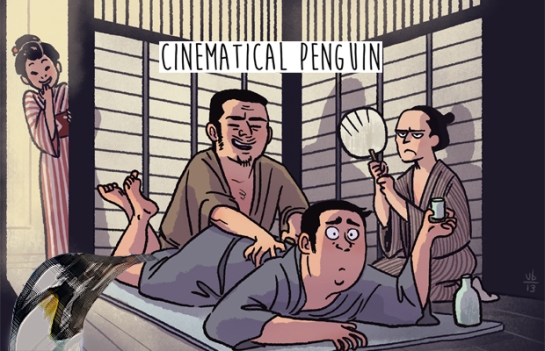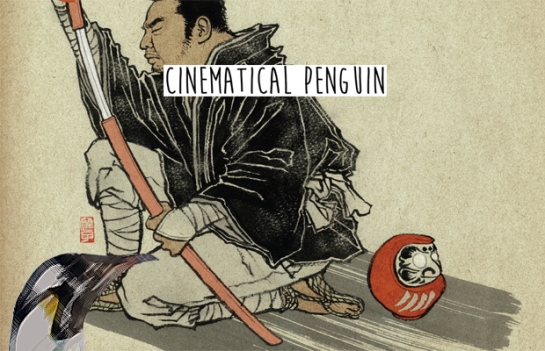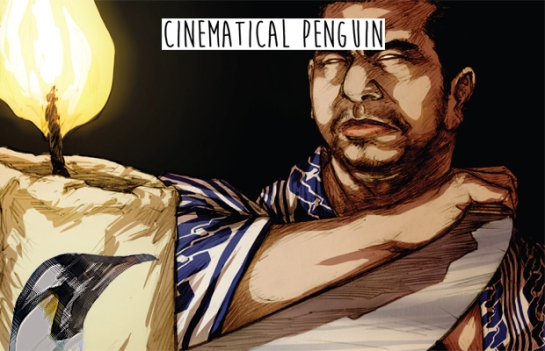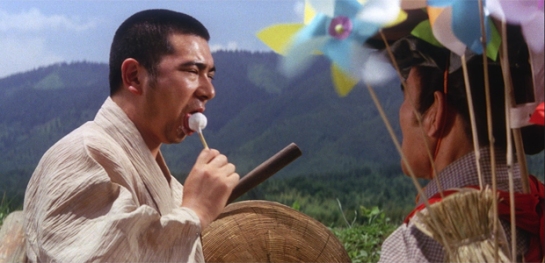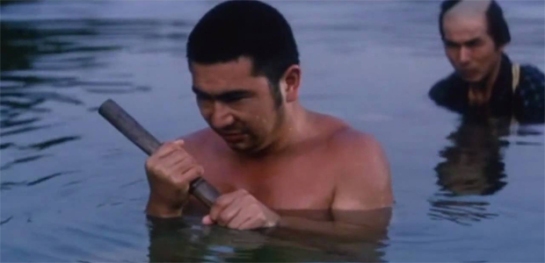 Zatoichi And The Chest Of Gold
Zatoichi And The Chest Of Gold
Year: 1964
Director: Kazuo Ikehiro
Writer: Shozaburo Asai, Akikazu Ota (based on a short story by Kan Shimozawa)
Starring: Shintaro Katsu, Shogo Shimada, Machiko Hasegawa, Tomisaburo Wakayama, Tatsuya Ishiguro, Matasaburo Niwa, Hikosaburo Kataoka, Mikiko Tsubouchi,
This 6th outing for the blind swordsman took on new writers and a new director, and it wouldn’t be the only time these three worked on the franchise. This new blood also allowed for a more adventurous and artistic approach to the formula we had come to expect. This is evident from the opening credit sequence, where we see Zatoichi (Katsu) battling a number of assailants against a pitch black backdrop. Only the people are illuminated, conveying Zatoichi’s world of darkness, but also in ability to ascertain where his foes are. It’s a gorgeous opening with a very theatrical feel and it is far from the only time that the style of this film impresses.
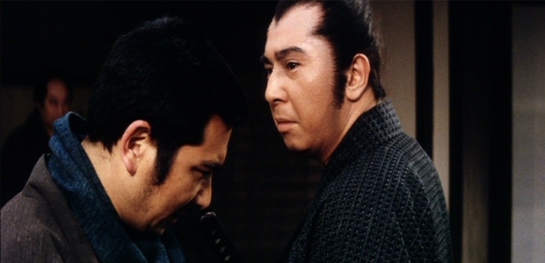
Style means nothing though, unless there is some substance to go with it, and we also have lashings of that as well. The story sees Zatoichi mistaken for a thief when a town’s taxes go missing. Zatoichi makes it his personal mission to track down the titular chest of gold and clear his name. Fairly simple, but a number of complexities and subplots are also introduced, but work to add weight to the overarching story, rather than smother it. One such side story focuses on Zatoichi repenting for murdering a man who in turn mistook Zatoichi for a warrior during a battle. We see Zatoichi’s tender side, which is also reflected in his refusal to turn to violence when the townsfolk accuse him if stealing their gold. They even go so far as to smash a bottle over his head, causing him to bleed, but Zatoichi knows he could easily kill them all. Violence is not his immediate go to, even though he is a magnet for such cruelty.
Katsu is once again joined by his real life brother Wakayama, this time taking on a different role to the one he played in THE TALE OF ZATOICHI CONTINUES. Wakayama makes his antagonist slimy and evil, but still retains integrity and respect towards Zatoichi. The real star of the film is Ikehiro’s dynamic use of the camera. He buries it in the ground to allow slow motion armies to charge over it, he does single tracking shots through wooded areas as Zatoichi slices his opponents, and he continuously makes each shot feel alive. If he isn’t using the camera to its full extent, then it’s the composition of shots that blows you away. As a group of samurai leave their lord’s manor at night, each carries a lantern which can be seen for miles. Ikehiro loves showing off the neverending sea of lanterns against gigantic backdrops such as mountains, and we love watching it.
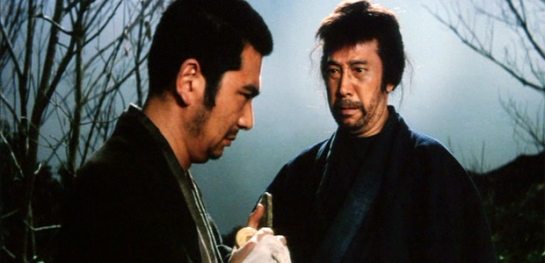
Zatoichi And The Chest Of Gold is a sprawling adventure of 82 minutes that completely engrosses and satisfactorily explores every avenue. Whether it’s the nature of fast spreading rumours, corrupt government officials, or the honour of a man trying to do right by himself and no higher power, nothing feels rushed nor slow. Despite being six films in, we’re learning more and more about this character who searches for purity but never seems to find it, leading him to the most gruelling showdown so far.

Will I enjoy it?
It needs no further knowledge to jump in on this film and experience everything great about Zatoichi. The character is an easy one to pick up and journey with on an adventure. The violence is heightened this time around and the fight sequences still hold up today, as long as you suspend disbelief at the thought of a pretty much super heroic samurai. If you love your action melded with deep characterisation and fine plots, then you should certainly give this a try. It’s the best in the series since the original.

